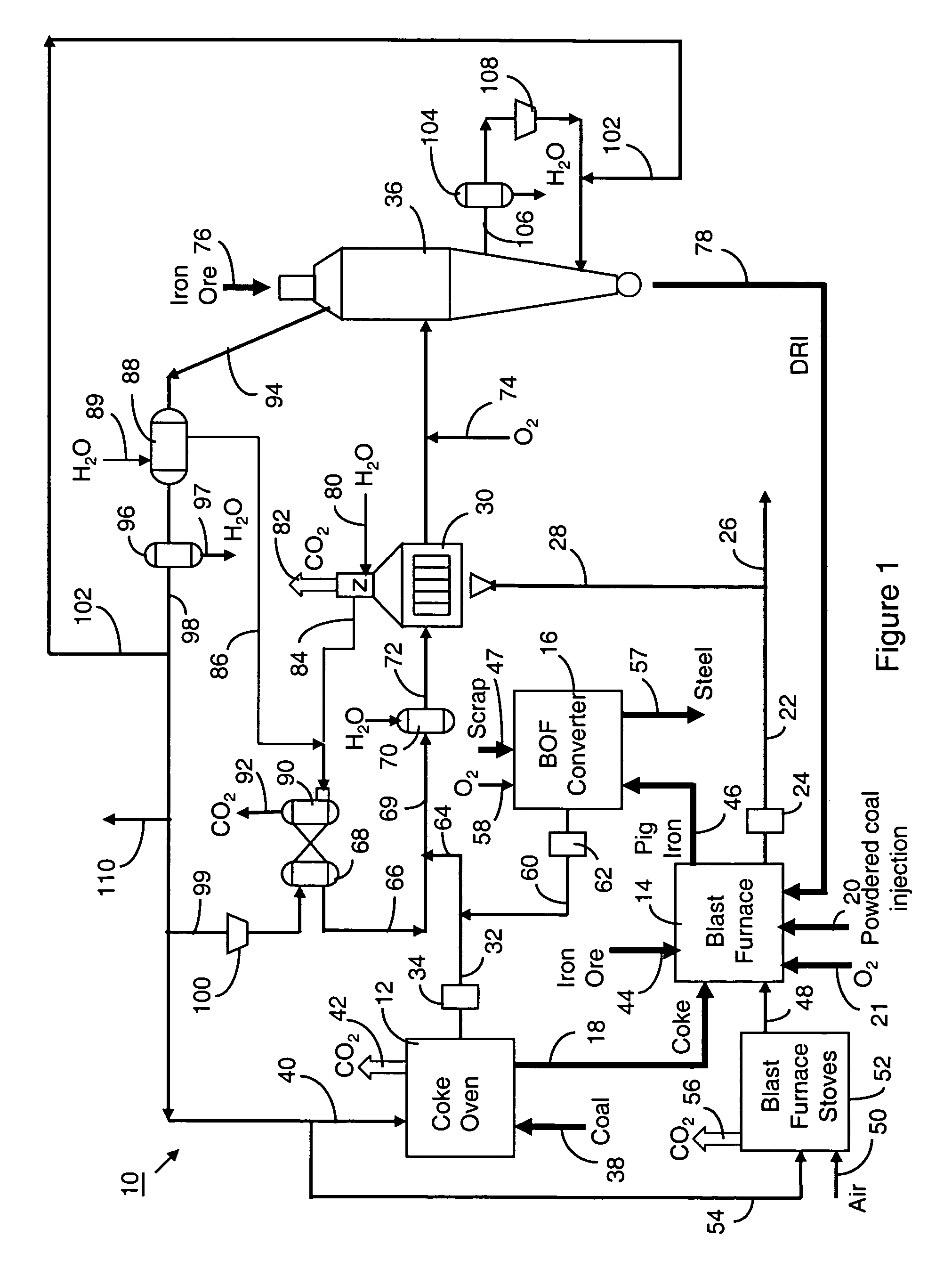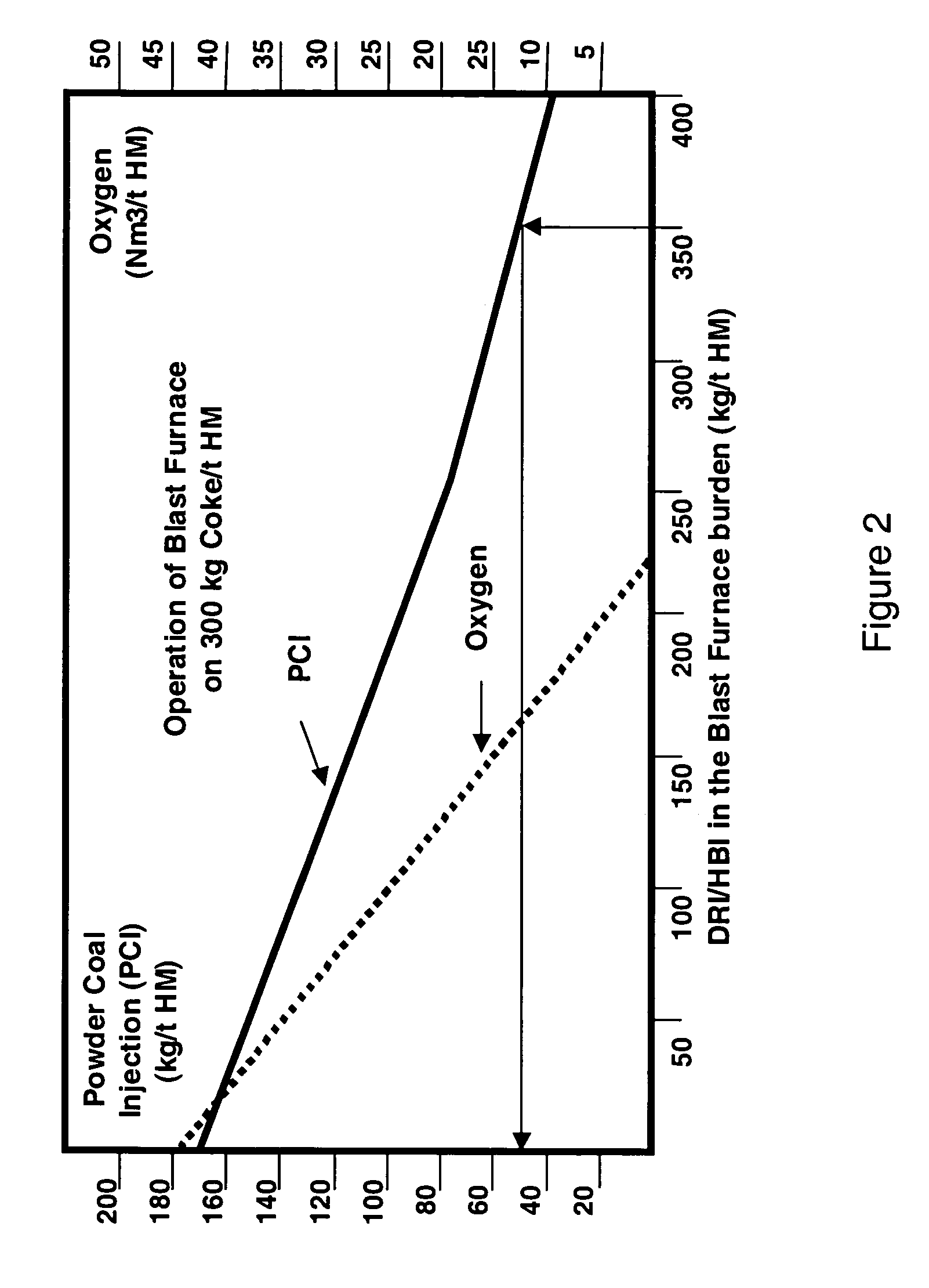Method and apparatus for improved use of primary energy sources in integrated steel plants
a technology of primary energy sources and integrated steel plants, which is applied in the field of methods and equipment, can solve the problems of complex forms and additional process equipment, and achieve the effects of increasing the capacity of blast furnaces and coke ovens, increasing steel production, and increasing the capacity of coke ovens
- Summary
- Abstract
- Description
- Claims
- Application Information
AI Technical Summary
Benefits of technology
Problems solved by technology
Method used
Image
Examples
examples
[0061]The following cases were analysed by applicants for improving overall energy consumption, CO2 emissions and production costs in typical integrated steel works. A typical BF uses 300 kg of coke and 170 kg of powdered coal injection to BF (PCI) per ton of pig iron (tHM). Considering this energy input, the maximum DRI production, utilizing all available COG and BOFG, is about 350 kg / tHM, with 94% metallization and 4% carbon content. Metallization is defined as the ratio between metallic iron to total iron in DRI. Cold DRI is charged to BF.
[0062]There are two cases: (1) to keep same liquid steel production rate. The benefit in this case is a reduction of environmental impact due to a decrease of specific coal consumption and consequently of CO2 emissions because the amount of PCI is lower and therefore the amount of coal burned is less; and (2) to increase pig iron production in the BF, decreasing not only specific consumption rates but CO2 emissions per ton of pig iron, and conse...
PUM
| Property | Measurement | Unit |
|---|---|---|
| Temperature | aaaaa | aaaaa |
| Temperature | aaaaa | aaaaa |
| Temperature | aaaaa | aaaaa |
Abstract
Description
Claims
Application Information
 Login to View More
Login to View More - R&D
- Intellectual Property
- Life Sciences
- Materials
- Tech Scout
- Unparalleled Data Quality
- Higher Quality Content
- 60% Fewer Hallucinations
Browse by: Latest US Patents, China's latest patents, Technical Efficacy Thesaurus, Application Domain, Technology Topic, Popular Technical Reports.
© 2025 PatSnap. All rights reserved.Legal|Privacy policy|Modern Slavery Act Transparency Statement|Sitemap|About US| Contact US: help@patsnap.com



